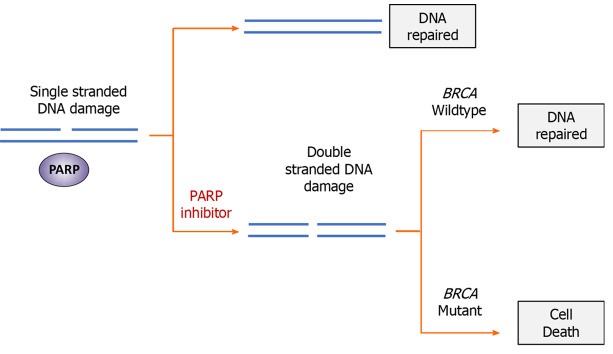Figure 2.
Mechanism of synthetic lethality in BRCA-mutated cells treated with poly (ADP-ribose) polymerase inhibitors. While neither a breast cancer susceptibility (BRCA) mutation or treatment with Poly (ADP-ribose) polymerase (PARP) inhibitors alone is lethal to cancer cells, dual-inhibition of both systems through mutation and pharmacological inhibition is incompatible with survival. Following PARP inhibition, single-stranded deoxyribonucleic acid (DNA) breaks are unable to be repaired. During replication, replication forks stall at unrepaired DNA damage, resulting in formation of double-stranded DNA break. In cells with defective homologous repair (BRCA mutations), double-stranded damage is repaired through non-homologous end joining, resulting in genomic instability and cell death. Poly (ADP-Ribose) Polymerase. PARP: Poly (ADP-ribose) polymerase; BRCA: Breast cancer susceptibility gene.

